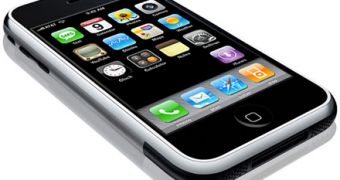Limbo is one of the largest mobile social networks in the US. These guys teamed up with GfK Technology, a leading market research agency, and released a joint Mobile Advertising Report (MAR) that reveals a not-very-surprising fact - iPhone users are more than twice as likely as non-iPhone users to browse the mobile web. The same people are more than three times as likely to use a location-based service (LBS) or a location-based social network, the survey showed.
“For the first time, this report compared iPhone users with non-iPhone users in order to better evaluate and more clearly understand the impact of mobile marketing on each platform,” says Limbo CEO Jonathon Linner. “We found that the iPhone users are not only more accessible, but are also more aware of all mobile ads including those outside of the typical SMS and mobile Web formats. In addition, this report shows that other mobile ad formats, including location-based services, are growing and gaining traction, with iPhone users serving as the early adopters.”
The survey further revealed that one in ten US mobile phone users picked up on a location-based service in Q4. The surveyed (ages between 25 and 34) saw the highest levels of interest in this type of offering, with 22 percent penetration. However, for iPhone users, it was four times more likely to recall LBS ads. 41 percent of iPhone users recall seeing mobile ads, the report continues. According to Limbo, the vast majority of these ads were seen in text messages (SMS), whereas the second most common mobile ad viewed is actually the mobile Web ad.
As noted above, it doesn't strike us as too surprising that iPhone owners are twice as likely to see mobile Web ads and four times as likely to see an ad while playing a game, or using a location-based service on their handset. After all, this is why folks grab the device in the first place. And bear in mind that Limbo and GfK Tech only looked at iPhone-users, not iPod touch owners as well.
The report uncovered additional comparisons, such as,
· One in three consumers that recall seeing a mobile ad responded in some way; this rises to one in two for iPhone users. · Calling a toll free phone number published in the ads is the most common means of response; iPhone users called twice as much as non-iPhone users. · One in seven mobile phone users visit a mobile web site, the second most popular response; this rises to one in five for iPhone users. · One in seven consumers reported buying a product or visiting a store as a result of seeing a mobile advertisement; for iPhone users, more than one in four bought something as a result of seeing an ad. · While men and women are equally likely to recall mobile advertising, women are 85 percent more likely to respond to ads than men.

 14 DAY TRIAL //
14 DAY TRIAL //